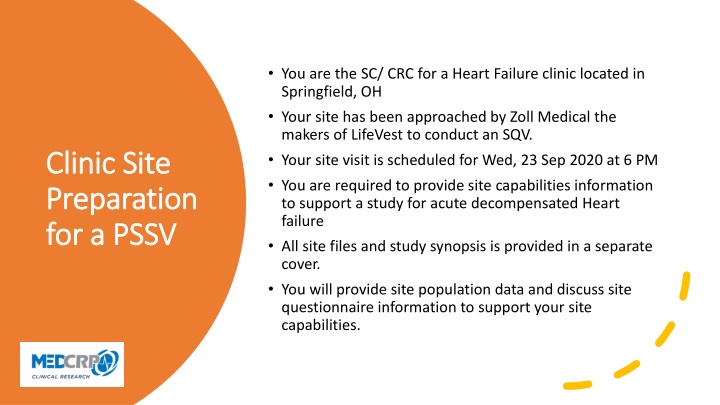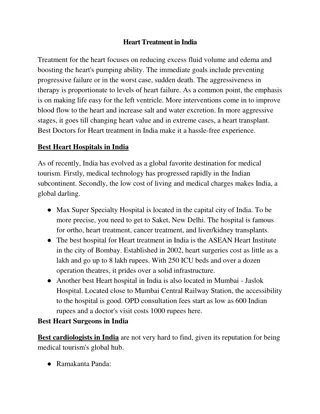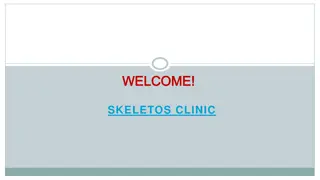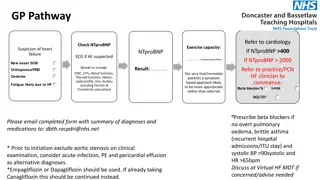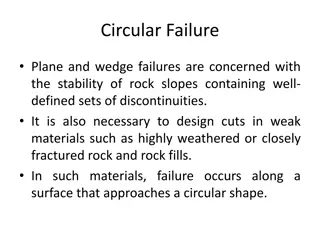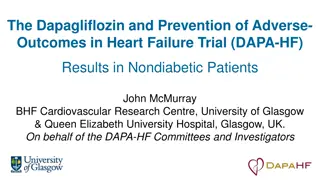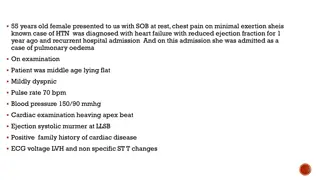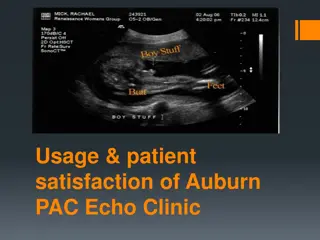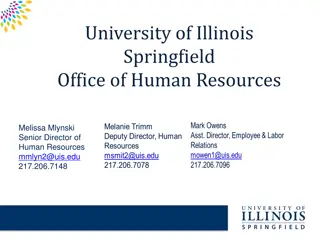Heart Failure Clinic in Springfield, OH - Site Visit for LifeVest Study
Heart Failure clinic in Springfield, OH has been approached by Zoll Medical to conduct a study on acute decompensated heart failure. The clinic's capabilities, staff, and procedures for patient recruitment during COVID-19 are discussed. The study focuses on patients with systolic or diastolic heart failure and addresses the management of acute decompensated heart failure symptoms such as pulmonary congestion.
Download Presentation

Please find below an Image/Link to download the presentation.
The content on the website is provided AS IS for your information and personal use only. It may not be sold, licensed, or shared on other websites without obtaining consent from the author.If you encounter any issues during the download, it is possible that the publisher has removed the file from their server.
You are allowed to download the files provided on this website for personal or commercial use, subject to the condition that they are used lawfully. All files are the property of their respective owners.
The content on the website is provided AS IS for your information and personal use only. It may not be sold, licensed, or shared on other websites without obtaining consent from the author.
E N D
Presentation Transcript
You are the SC/ CRC for a Heart Failure clinic located in Springfield, OH Your site has been approached by Zoll Medical the makers of LifeVest to conduct an SQV. Your site visit is scheduled for Wed, 23 Sep 2020 at 6 PM You are required to provide site capabilities information to support a study for acute decompensated Heart failure All site files and study synopsis is provided in a separate cover. You will provide site population data and discuss site questionnaire information to support your site capabilities. Clinic Site Clinic Site Preparation Preparation for a PSSV for a PSSV
PI- Dr. Pradeep Gujja Sub-I Dr. Mohammed Aktar Sub-I Dr. Mohammad S. Ashraf Sub-I Avindar Gupta Sub-I Dr. Lolita Randawar Site Staff
Mercy Health- Springfield Heart 100 W. McCreight Ave. 2ndFloor. Springfield, OH www.mercy.com Site Location Site Location
Site Heart failure population Recruitment efforts during COVID-19 Structure of Heart Failure Clinic How does PI delegate clinical staff to a study How many MD support the PI How will PI identify Patients PSSV Discussion with PI What is the hospital policy to use arrythmia data provided by Zoll in the management of HF patients, are there hospital restrictions to download clinical reports Will the PI allocate time to review the weekly report and delegate SC to call the patient? How does the PI manage AEs
Site Heart failure population Recruitment efforts during COVID-19 Structure of Heart Failure Clinic How does PI delegate clinical staff to a study How many MD support the PI How will PI identify Patients PSSV Discussion with PI What is the hospital policy to use arrythmia data provided by Zoll in the management of HF patients, are there hospital restrictions to download clinical reports Will the PI allocate time to review the weekly report and delegate SC to call the patient? How does the PI manage AEs
Acute Decompensated Heart Failure HF (systolic or diastolic) can result from any structural or functional impairment of ventricular filling or ejection of blood LVEF HFrEF - Clin Dx of HF < 40% HFpEF Clin Dx of > 40-50% with abnormal LV diastolic function Pulmonary congestion is an acute increase in extravascular lung water EVLW and a common manifestation of ADHF. The worsening of HF symptoms with fluid build up in the lungs can lead to symptoms listed Population in the US is > 5 million with over 650,000 Dx annually. 50% of patients die within 5 years of Dx. Cost is >$30B annually Dyspnea- difficulty breathing Swollen legs and feet Fatigue Acute respiratory distress Hospitalization If patient is not properly monitored, 50% of patients die within 6 months of Dx.
RV heart failure causes fluid back-up in the RV when the pump breaks, causing venous distention, confusion in the brain. Fluid back-up in the periphery, causing jugular venous distention, peripheral edema, LV heart failure (reduced systolic EF) causes fluid to back-up. Blood cannot flow to the brain causing confusion. Brain altered mental status due to low flow state of blood flow Fluid will back-up to the lungs causing dyspnea on exertion, shortness of breath, orthopnea Left Right Reduced LVHF will also produce a S3 heart sound on examination using a stethoscope. Reduced blood flow to the kidney causes renal failure Fluid build up occurs in the lower limbs because peripheral edema of and bowel fills with fluid causing malabsorption- belly ache Kidney
Volume Overload Flash Pulmonary edema from uncontrolled hypertension Atrial Fibrillation Hypotension Reduced organ perfusion from reduced cardiac output leading to shock from low oxygen Management of ADHF For most of these patients lifestyle modifications such as diet and weight loss has not been successful due to sedentary lifestyles Poor management of dietary discretion Possible medication non-compliance. The heart muscles (wall of the ventricles) become very weak from working overtime to pump enough blood and supply the entire body with oxygen
Chest- x-ray will show cardiomegaly enlargement of the heart Pulmonary edema- left heart is backing up fluid into the pulmonary circulation. BNP value Brain Natriuretic Peptide: a blood test that shows the ventricles releases proteins into the bloodstream due to the stress of the overworked muscles. It is higher if you have CHF. How to Diagnose ADHF Pathophysiology Echocardiography- gold standard- will show Systolic HF- dialated; Diastolic HF- constricted; MI, or other type of pathology Cardiac Catherization will determine any other underline pathology
Therapy goals are to manage the triggers of this disease and relieve symptoms Management of ADHF For most of these patient, lifestyle modifications such as, diet and weight loss has not been successful due to sedentary lifestyles Poor management of dietary discretion. Possible medication non-compliance.
Class of CHF- NYHA functional Class Stage A- high risk with no structural heart disease Class Stage B structural disease but no HF symptoms Class I Class I-III Stage C Structural Heart disease with prior HF symptoms Class IV Stage D - Refractory and require durable mechanical support
Management of CHF Is determine by what class of CHF the patient has and to minimize the risk factor, regardless of the class, all MD follow ; Diabetes Put them on insulin HBP hypertensive meds High cholesterol put them on statins COPD- put them on a CPAP Reduce Na+ intake and H20 intake; high Na causes the body to retain water.
Our focus is on NYHF Class IV patients that require some form of mechanical support and monitoring post hospitalization. Despite improvement with medical therapy, the readmissions of these patients pose a significant burden to the healthcare system. The Zoll MicroCor device monitors ADHF patients who have been admitted and require post-hospitalization monitoring. Outpatient monitoring and lung impedance management can significantly reduce repeat hospitalization, therefore reducing the healthcare burden. Management of CHF
The SC will work with the CRA to provide site capabilities information to manage this study. Management of CHF Good luck everyone!
